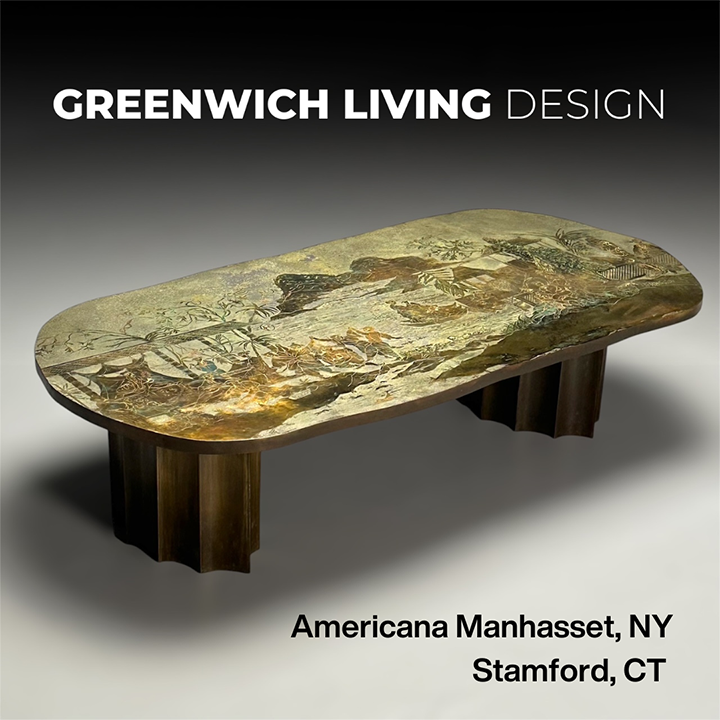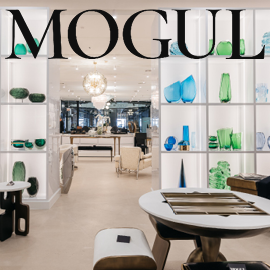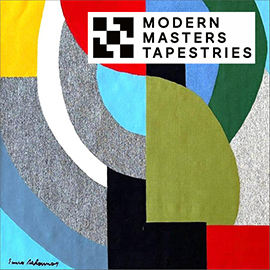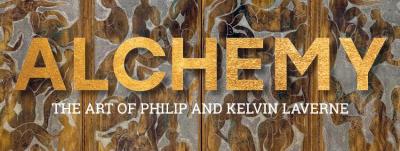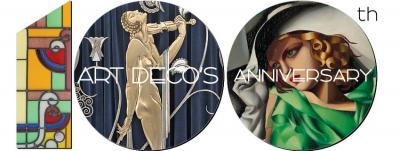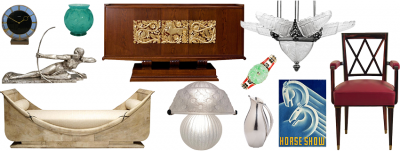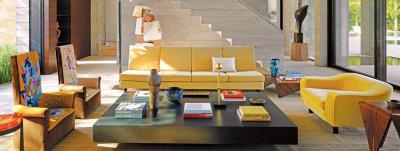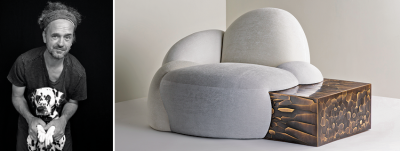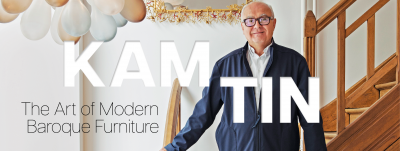American Monotypes in the Baker/Pisano Collection
Monotype is the most direct of the print mediums. The straightforward process involves an artist painting a subject, usually on an unmarked copper plate, and placing the still-wet plate onto a press with a sheet of paper. The pressure of the press transfers ink from the plate to the absorbent paper. Some artists do without the press altogether, liberating the process even further. Of course, variations and developments of the basic process are inevitable, and in the late 1800s and the twentieth century, monotype inspired artists, particularly in America, to explore its possibilities.
But monotype also has its own distinctive challenges. Foremost, and the reason the name “monotype” is apropos, is the fact that the monotype is not editionable. After the monotype plate is printed once, the image is forever changed. Most of the ink is removed, and a second impression will be much fainter. Another challenge to the monotype printmaker is the necessity of working quickly. The ink used for monotype, whether black printer’s ink or oil paint thinned to suit the task, will stay wet on the plate long enough to be applied and worked, but not for hours at a time. This may encourage spontaneity, though not necessarily thoughtful composition.

- Fig. 3: Edgar Degas (1834–1917)
Au Salon, ca. 1878
Monotype, 6½ x 8½ inches
Bears artist’s oval red-ink estate stamp (Lugt 657) on support. Baker/Pisano Collection, New York,
Promised gift to the Chazen Museum of Art.
This monotype is the second impression (cognate)—the first is in the Picasso Museum, Paris. Degas’ mother was an American from New Orleans and he liked to call himself un fils de Louisiane.
The monotype does provide great latitude for changes before printing. It is very simple, after a stroke of the brush has been made, for the artist to alter it by pushing the ink around on the plate with the brush’s bristles or by drawing into the ink with the brush handle’s tip. Some artists prefer to start by covering the plate with an even coat of pigment. The artist can then work back into that solid field, clearing some areas with a cloth, and thinning or reapplying ink to other areas with a brush or fingertip. Since all of these tools and approaches leave distinctive marks in the final work, monotypes often show very clear traces of their making. Georgia O’Keeffe’s (1887–1996) monotype Untitled (Woman Painting), circa 1907–1908, has one of the artist’s fingerprints at the middle right of the figure—quite literally, the artist’s touch (Fig. 1).
For audiences as well as artists, the immediacy of the artist’s hand is part of the attraction of the monotype process. At the end of the nineteenth century, when the earliest prints in this exhibition were made, Europe and America were in the midst of a lively transformation in art that saw the rise of Impressionism. Many of the American artists who dove into the milieu of European art were braced and challenged by the freedom of new styles abroad on the continent: looser brushwork and the conscious expansion of painting beyond traditional portrait, history, and landscape subjects. These, along with the exploration of the art of other cultures and novel techniques were a heady mix, and American expatriates brought back with them a mélange of fresh approaches to the work of making art, including the monotype technique.1
Foremost among the American artists who popularized the monotype were William Merritt Chase (1849–1916) and Frank Duveneck (1848–1919). More than an important portraitist of his day, Chase was a teacher and avid explorer of art. Though his own professors at the Munich Academy espoused a didactic historical painting style, Chase explored the less-academic Barbizon School painters’ style before eventually embracing the colorful, modern subjects and novel compositions of Impressionism. Like many of his European contemporaries, Chase was intrigued by non-Western art, and it is probably inevitable that an artist with such broad interests would involve himself in monotype (Fig. 2). He first made monotypes as a student in Munich in the mid-1870s.2 Certainly, the exhibition of Edgar Degas’ (French, 1834–1917) monotypes (Fig. 3), printed in black ink heightened with pastel colors after printing, in the third Impressionist exhibition of 1877, would have brought the medium into the limelight for Americans in Europe.
Frank Duveneck knew Chase as a fellow student at the Munich Academy, and may also have learned about monotype there, but a group of his fellow American artists in Florence, Italy, called the Duveneck Boys, were among the first to popularize the process. They regularly socialized, and in the winter of 1879–80 made monotypes together for their own amusement, using the press of a German expatriate, Otto Bacher (1856–1909).3 The technique was even occasionally referred to as “Bachertype” at the time. Their monotypes were typically executed in one color and tended toward caricature (Fig. 4) rather than fully realized portraiture, and landscape impressions rather than detailed descriptions.
Works of Chase, Duveneck, and their students and followers make up a substantial portion of the prints in American Monotypes from the Baker/Pisano Collection. This is not just a reflection of the interests of D. Frederick Baker and the late Ronald G. Pisano, the assemblers of this collection and scholars of Chase and American artists of his era. The next generation of artists whose monotypes are in the exhibition are often students of Chase or Duveneck. Their students became teachers in their turn who also were able to make it part of their artistic practice.
Only a year after the Duveneck Boys were making monotypes in Florence, two artists, Charles Alvah Walker (1848–1920) and Albion Harris Bicknell (1837–1915) (Fig. 5), working in New York State both created landscape monotypes that are more formal and traditional than those of the Duveneck Boys and Chase. Interestingly, both also claimed to have invented the process themselves: Walker may have actually coined the term “monotype,” but neither can legitimately claim to have invented the process. However, a sympathetic observer can perhaps forgive Walker’s claim to have independently recognized the potential of the monotype while proofing on this press. Degas had gone through a similar rediscovery of the process earlier in the nineteenth century. Clearly, the monotype was a process whose time had come.
The technique is an offshoot of printing that is rediscovered so regularly that it becomes difficult to count all of its originators. Scholars have considered the possibility that Rembrandt’s (1606–1669) and Giovanni Battista Piranesi’s (1720–1778) evocative inkings of their etched plates were a kind of monotype, though the earliest extant pure monotypes are those by Giovanni Benedetto Castiglione (1609–1664) from the 1640s, whose monotypes are executed on blank plates, with no linework cut into them. At the end of the 1800s, a time when painters experimented with looser brushwork and when the continuing development of photography helped free artists from being mere copyists of reality, it seems inevitable that monotype would be rediscovered—it lends itself to a kind of Impressionism and rewards the deft execution and craft of the draftsman.
Through the nineteenth century there was much ingenuity expended on finding a way for printmakers to create editions that were as painterly as monotype. Generally, inventors came up with a special compound that could be applied to the still-wet artist’s painting executed on a copper plate. When the plate was dried and electroplated, it could then be inked like an etched or engraved plate and printed again and again, providing the spontaneity of the monotype, but with the repeatability of other print media. Various inventors came up with similar processes, and by the end of the 1800s three processes were available: the galvanograph, the electrotint, and the herkomergravure.4 The herkomergravure’s English inventor, Hubert Herkomer (1849–1914), was a popular painter of portraits and social genre scenes, and an inveterate experimenter in the arts. Chase introduced Herkomer to the monotype process in 1885.5 Herkomer developed his process by 1897, but first wrote about it in 1892.6 It may have been in 1902 that Herkomer returned Chase’s favor by introducing him to the herkomergravure, when Chase next returned to England.
Ultimately, processes like the herkomergravure fell into disuse, and one has to suspect that the reason for this is the relative ease by which editions of painterly prints could be made lithographically. Although the lithographic process is complex, it is no more complicated than the herkomergravure, and has the advantage of being able to produce very large editions with no obvious degradation of the image. As a result, lithographic presses, printing supplies, and the knowledge of their use spread quickly and widely through the nineteenth and early twentieth century.
The monotype-like processes were supplanted by lithography with artists continuing to be drawn to the original process of the monotype through the twentieth century, which by then had become a full-fledged, serious artistic medium. The medium’s prestige grew particularly when artists began creating monotypes in color. American monotypists by the 1910s ranged from New York artists such as Gifford Beal (1879–1956) (Fig. 6 and Abraham Walkowitz (1878–1965) to California artists George Demont Otis (1879–1962) and John A. Stanton (1857–1929). The American most involved in early color monotypes was Maurice Brazil Prendergast (b. Canada, 1859–1924), who was working in Paris in the late 1800s.
In the 1880s, Degas had experimented with monochrome monotypes. Those destined for exhibition, he then drew over with pastels. However, in about 1890 he took up the medium again, this time experimenting with color inks. It was just at that same time that Prendergast, an exemplar of the experimental monotypist, took up the color monotype seriously. Like Degas, he was intrigued by the possibilities of the color monotype and undeterred by the necessary speed with which the work of painting had to be completed. Prendergast often printed his monotypes by rubbing the paper down onto his designs with no more complex technology than a wooden spoon. He could vary the pressure he applied to the back of the paper, making it pick up more ink in some areas than others. Prendergast’s enthusiasm for the technique is reflected in the hundreds that he completed, but also by his preference for showing his monotypes alongside his paintings in exhibitions of his work. His images are nearly always figural, often of fashionably dressed young women, as in his Purple Hat (Fig. 7).
Prendergast also championed an appreciation of second strikes from the monotype, preferring lower-contrast images, perhaps in emulation of the largely monochromatic works of James McNeill Whistler (1834–1903). Prendergast’s many surviving monotypes often show more clearly the texture of the supporting paper, and occasionally, the slight sparkle of the Japanese paper he favored: a delicate mulberry paper made with a sprinkling of mica to give it minute reflective specks.
Like her friend and mentor Degas, Mary Cassatt (1844–1926) experimented with a variety of novel print processes, including a series of complex color etchings inspired by Japanese woodblock printmaking techniques. The pastel counterproof, however, could not be less technical. Cassatt drew with oil pastel on a piece of paper; it was placed beneath a dampened sheet of blank paper, and both were put through a press. The soft oil pastel transferred onto the second sheet making a reverse, lighter copy of the original (Fig. 8). Like monotypes printed with ink or oil paints, the image cannot be editioned, but it does have the ethereal quality of second-strike monotypes by Prendergast.
Through the twentieth century, artists continued to come to the technique, changing it to suit themselves. Milton Avery (1893–1965) made many monotypes, but felt free to alter the monotypes with brushstrokes after they had emerged from the press (Fig. 9). Mark Tobey (1890–1976) used watercolor inks for his exploration of monotype in the 1960s (Fig. 10), further compressing the time he could work his compositions, since watercolor dries even more quickly than oil-based media, and like Avery he felt free to rework the image after printing.
Of all the print processes, monotype is the most spontaneous and simple. Its ability to capture a deft stroke of the artist’s hand gives it great appeal to the skilled sketcher, while its simplicity makes it an ideal platform for the sorts of experiments that have intrigued American artists. Taken together, the Baker/Pisano Collection allows viewers a glimpse into the history of American art from a different point of view, casting new light onto artists and their work.
American Monotypes: The Baker/Pisano Collection is on view at the Chazen Museum of Art, Madison, Wisconsin, through February 22, 2015. The fifty-seven works, which include fifty-three monotypes, two counterproofs, a monoprint, and a Herkomer print, are drawn from the collections of the Chazen Museum of Art, the University of Wisconsin-Madison, and the Heckscher Museum of Art, Huntington, New York. The exhibition and catalogue were underwritten by the Karen H. Bechtel Foundation. The on-line catalogue is available with download instructions at www.chazen.wisc.edu/explore-art/exhibitions.
Andrew Stevens is curator of prints, drawings, and photographs at Chazen Museum of Art, Madison, Wis.
This article was originally published in the Anniversary/Spring 2015 issue of Antiquse & Fine Art magazine, a digitized version of whic his available on www.afamag.com. Antiques & Fine Art, AFAmag, AFAnews, and AFA Publishing are affiliated with InCollect.com
2. See Hubert von Herkomer, Etching and Mezzotint Engraving (London: Macmillan & Co. 1892), 105.
3. Joann Moser, Singular Impressions: The Monotype in America (Washington, D.C., Smithsonian Institution Press, 1997), 12.
4. Coffin, William A. “Monotypes with Examples of an Old and New Art,” in The Century Magazine 53, (November 1896-April 1897), 517–524.
5. Moser, Singular Impressions, 11.
6. Herkomer, Hubert, Etchings and Mezzotint Engraving: Lectures Delivered at Oxford (New York: MacMillan, 1892), 105–107.




